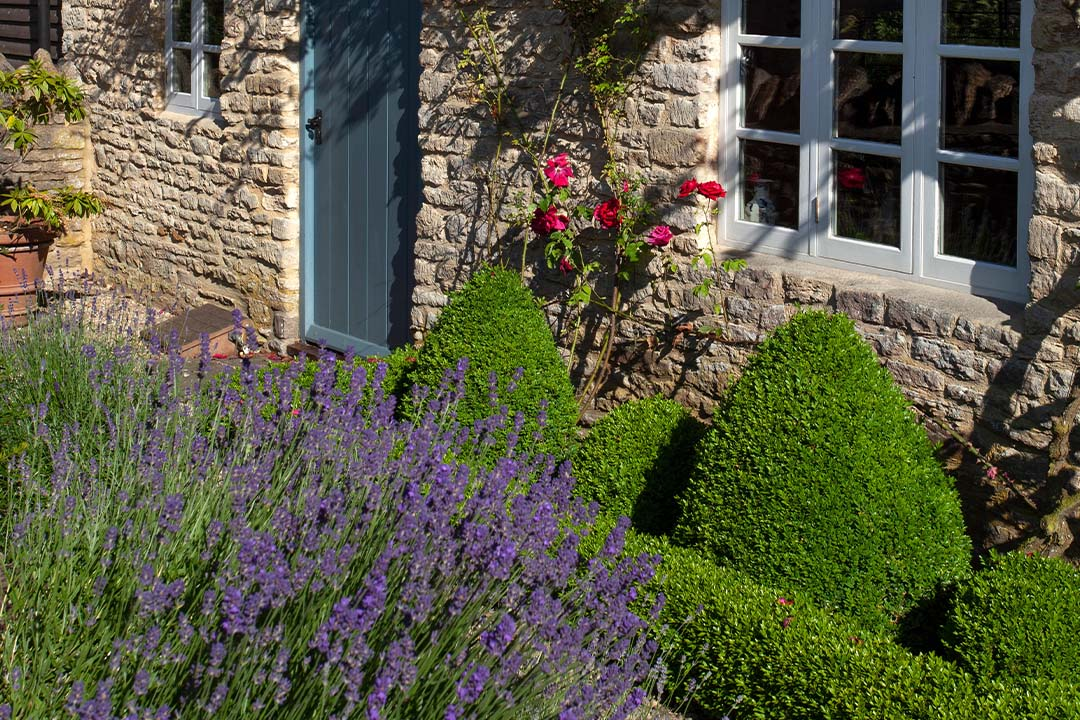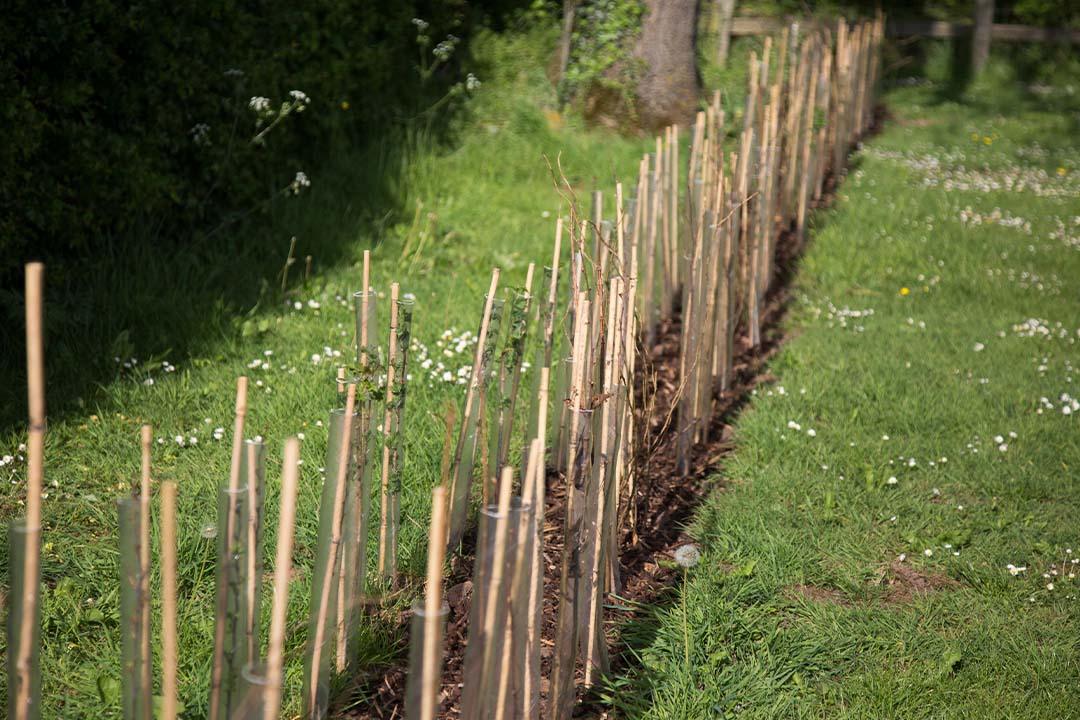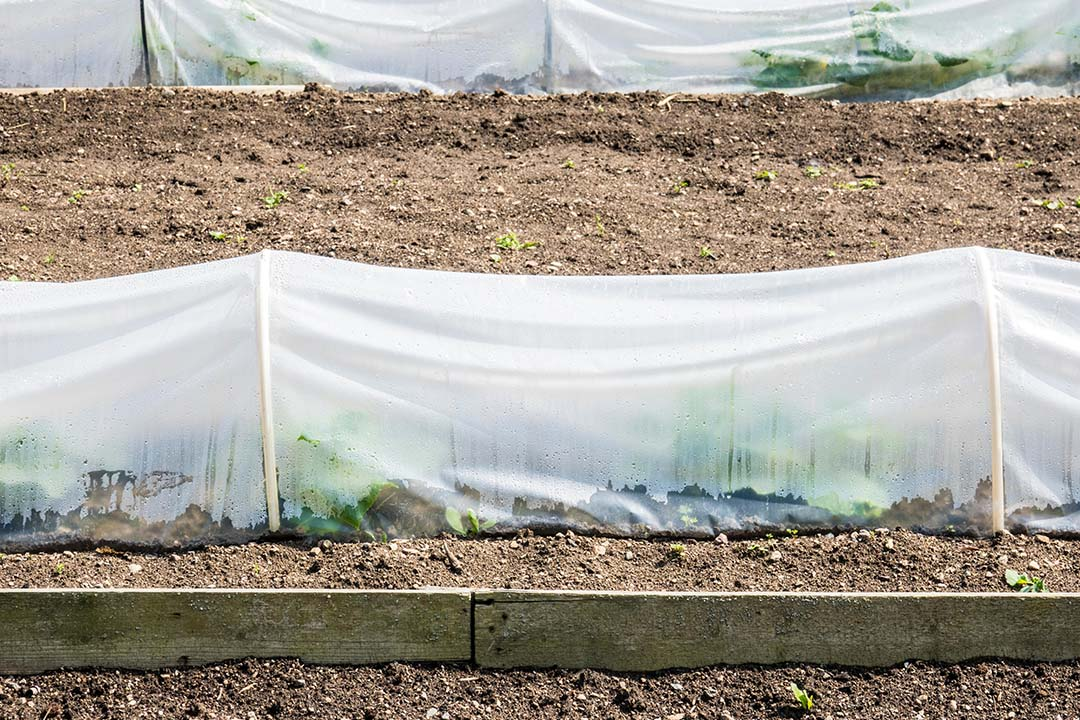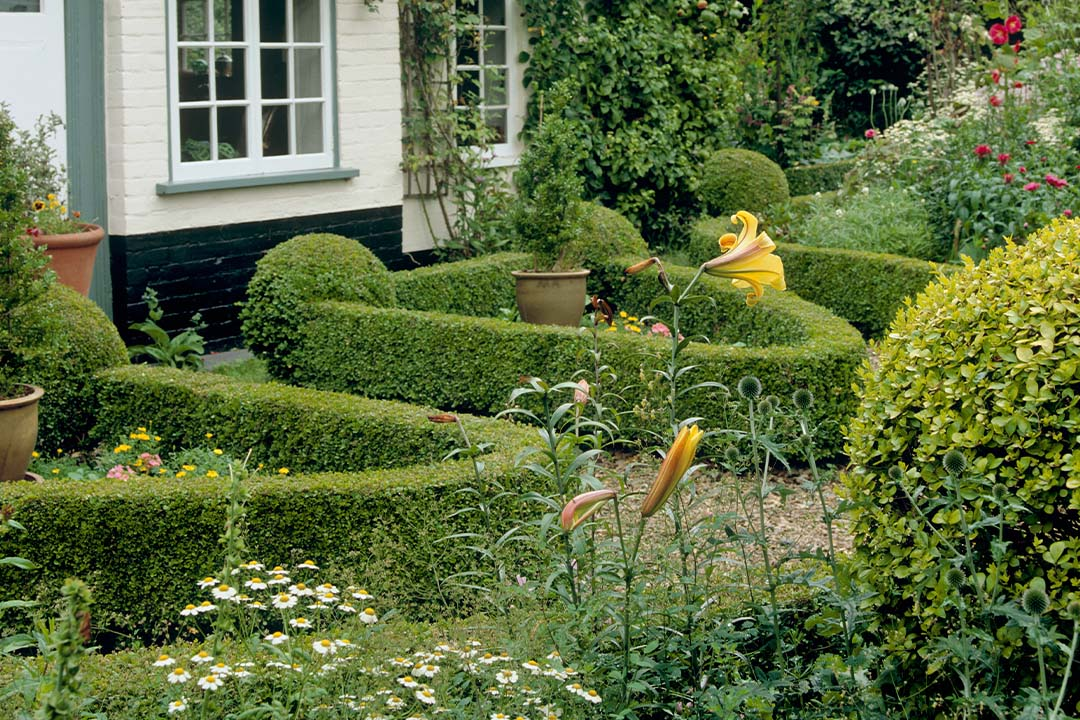This guide will take you through exactly how to plant bare root hedging. Whether you are brand new to bare root plants or want to create a dense privacy hedge with evergreen plants, we can take you through the process step by step.
From digging the planting hole for the bare roots to mulching your newly planted hedge, our horticulturalists have quite a few tips to help maintain healthy growth! Learn how to plant a bare root hedge today, starting with ordering and storing your hedges.

Before you start: when to plant bare root hedging
The first step is knowing when to plant bare root hedging. As bare-root deciduous hedging is in its dormant phase in autumn and winter, this is the optimum time of year. This also applies to evergreen hedging plants - try to get them into your planting site before the exuberant plant growth of early spring.
Avoid any hot weather that may sneak up on you in early autumn. Heavy rains should also be avoided, as the sodden soil will be too compact for the roots. Likewise, you'll want to avoid overly icy or snowy conditions during or after you plant your new hedge. Late autumn (November) and early spring (February) are usually the best months, as the soil conditions will also make it easier to dig.
How to store bare-root hedging
Unlike container-grown plants, it is best to plant bare-root hedge plants as soon as you receive them. However, to plant bare root hedge plants, you need to ensure there's no heavy rain or frost forecast, as this can disrupt the root mass. Likewise, if there are strong, cold winds on the day you want to plant your hedge, keep the roots covered until the absolute last minute.
So, to keep your plants healthy for the interim, store them in a cold but frost-free location. Leave the plant roots bare, and don't water them until you are ready to start planting!
How many bare-root hedging plants do you need?
The number of bare root plants you should purchase depends on the hedge species and whether you are planting a single or double row. A general rule is to have five plants per metre (or 10 per metre for a double-row hedge). Most plants, including bare root laurel hedging, follow this rule. One plant every 20cm allows enough space for root growth. There are exceptions, however. Taller plants and those with a larger root system can be planted up to 60cm apart.
You can learn more about the spacing requirements and sizes of each hedging plant by finding the variety at Gardeners Dream. Our bare root laurel hedging, for example, is 1ft to 3ft.
Gardeners Dream tip: whether you are planting a double staggered row or not, you usually need fewer evergreen plants compared to deciduous plants. The dense foliage of evergreens will fill the planting area better than their deciduous counterparts.

How to plant bare root hedging guide
Follow these steps to get your bare root plants firmly established. The correct timing with the correct method will ensure you can encourage healthy growth from your bare root hedges. You can also reach out to our horticulturalists if you need specific advice for your variety of hedging plants, like Green Beech, for example!
You will need...
The most basic equipment you will need includes your bare root plants, a garden spade, soft string, and wooden stakes. You'll also need to wait for the ground to thaw, and you can have mulching/fertilising tools to hand - bark chips and bone meal are good options.
1. Planning and digging
You should already know the desired length of your hedge, as this will determine how many bare root hedging plants you purchase. Once they have arrived, you can start to prepare the soil. Do this by first weeding the area - remove weeds and any small plants that could compete with your hedge as the roots establish. You can also remove any large stones or other debris.
If your soil is poor quality, consider adding compost. You can also use bone meal, which encourages root growth - wear gloves and mix thoroughly into the soil.

With the area cleared, it's time to prepare the planting hole. Mark the length of the hedge using string and stakes to get a straight line. Then, use your garden spade to dig a trench the same depth into the soil level from one end to the other. Use a fork to prod drainage routes into the sides and bottom of the trench. This trench should be deep and wide enough to comfortably fit the root balls of your hedge plants. Digging a trench is often simpler than digging individual holes once you get into the swing of it!
Most small hedge plants with a height of around 1 metre need a trench approximately 20cm deep and 30cm wide. Taller plants may need a deeper and wider trench - judge this based on the size of the root ball.
Spacing Double Rows: If you are planting a double row for a bushy hedge, your two trenches should have a distance between them that's equal to your plant spacing. So, if you are planting one hedge plant every 30cm, then you should have a 30cm gap between the rows, too.
2. Prepare your bare root plants
With most plants, the thought of not only disturbing but trimming the roots is enough to send a shiver down any gardener's spine. But not the root balls of bare root plants! When they are in the dormant season and are ready to be planted, you can give the roots a good trim.
Using your secateurs, lightly prune the roots of your evergreen cherry laurel, deciduous plants, or other chosen hedge variety. This encourages growth and may actually help the hedge retain moisture. Prune right before you plant your bare-root hedging rather than a few days in advance.
On the day you plan to start planting, soak the roots of each plant in water for a few hours. Don't be tempted to soak for longer or overnight, as this can lead to root rot.
3. Plant and cover
Now, place your new plants in the soil - gently spread the roots and make sure any wooden stakes don't damage them. The desired height should ensure all the roots are underground and the trunk is above ground - usually a spade's depth deep. Use a measuring tape to ensure each plant is the right distance from the previous, and firmly pat the soil around them to fill up your trench. It's okay if the soil mounds up a little - it will settle back down with the next bout of wet weather.

There's not much skill involved here. Knowing how to plant bare root hedging is quite simple, and this step is no different from planting any other kind of plant. If you have a double row, make sure the plants are staggered rather than aligned one behind the other.
Add wooden stakes, if needed, to provide support for your hedge plants. This might not be necessary if you have planted in a sheltered spot.
4. Aftercare for bare root hedge plants
With your new hedge firmly planted in the soil, you can begin aftercare. This starts with protecting your bare root hedging plants from the elements. Windbreak netting, in addition to wooden stakes, is a cost-effective way to protect your hedge plants if you live in an exposed, windy location. You may also want to use netting (or chicken wire) to protect the young plants from rabbits and deer.
Additionally, you can apply some mulch around the base of your new hedge. This prevents the soil from drying out and short grass from competing for nutrients - just make sure the mulch doesn't directly touch the trunk of each plant. Organic matter from your garden or bark chips will suffice.
As for pruning, most evergreens can be left alone for the first two years. Deciduous varieties can be lightly trimmed to remove damaged branches if needed. Blackthorn is a unique case - it can be pruned a little harder to encourage a bushy shape just after planting.

Now, just give your bare root plants good water (5 litres per plant, repeating twice a week) and watch them flourish.
Whether you've opted for evergreen bare-root laurel hedging or another deciduous hedging instead, you now know exactly how to plant a bare-root hedge successfully. If you want to discover other bare-root plant options for your garden (or get some personal advice from our horticulturalists), find more hedging options here. Don't forget, we have free delivery on orders over £50.

Craig Wilson
Co-founder and in-house gardening expert at Gardener's Dream
Craig Wilson, co-founder and director of Gardener's Dream has established himself as a key figure in the online gardening industry. With over 2 decades of plant knowledge and gardening experience, he takes pride in sharing his top tips and tricks for the garden.






